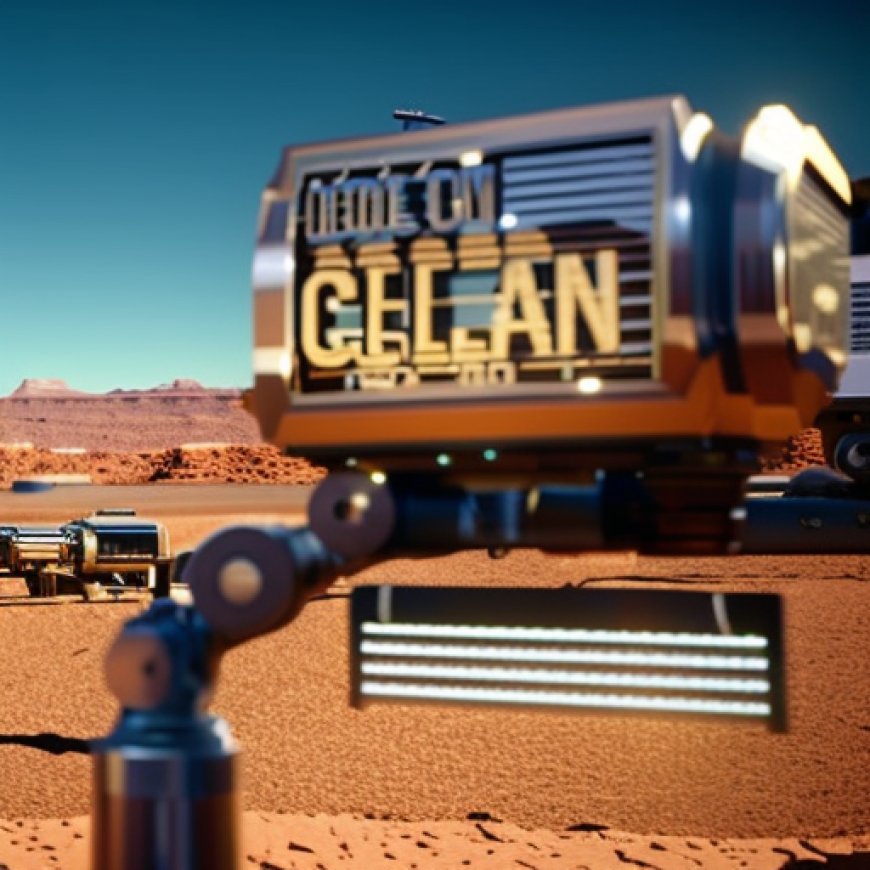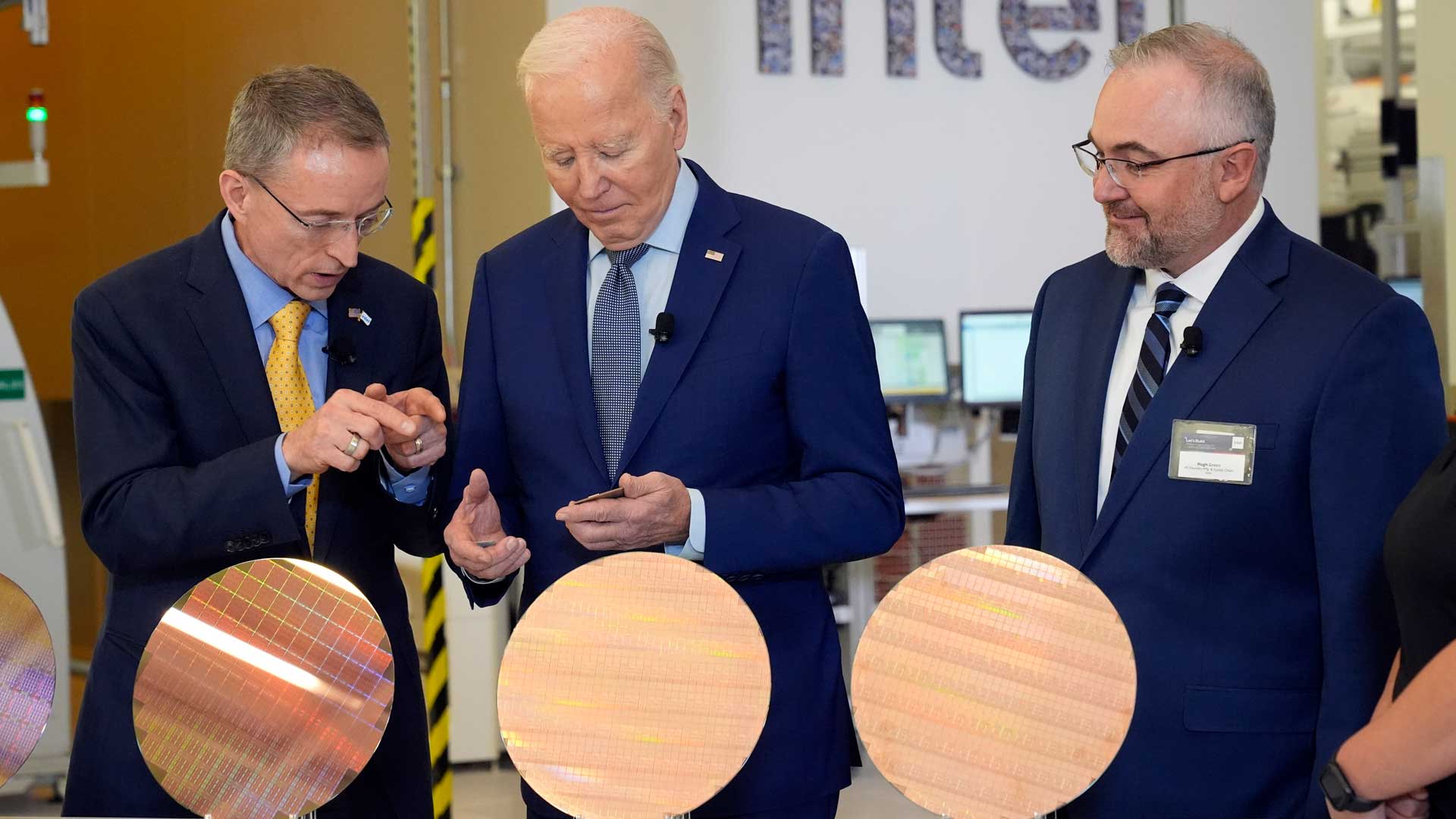Arizona’s Clean Tech Boom: $90 billion invested, ‘thousands of jobs created’
Arizona's Clean Tech Boom: $90 billion invested, 'thousands of jobs created' AZPM


Clean Economy and Community Impact Summit

On Friday, April 5, local, state, and federal leaders convened at the Clean Economy and Community Impact Summit at the University of Arizona Tech Park in Tucson, to discuss the economic impact of federal investments into clean energy across Arizona.
The Biden-Harris Administration’s Investing in America Agenda
Panel discussions focused on the positive outcomes of the Biden-Harris administration’s Investing in America Agenda, which has allocated funding from the Inflation Reduction Act (IRA) and Bipartisan Infrastructure Law (BIL), resulting in the creation of thousands of jobs throughout the state.
Creating Jobs and Promoting Innovation
Senator Mark Kelly highlighted that many of these jobs do not require four-year degrees, particularly in the growing manufacturing industry. He emphasized that Arizona is becoming a hub for innovation due to federal investments.
“Both of these things are going to help entrepreneurs and spur companies to build a clean economy so that we can mitigate a lot of the effects of climate change,” Kelly said.
President Biden’s Visit and Funding for Intel
Senator Kelly also mentioned President Biden’s recent visit to Arizona, during which he awarded $8.5 billion to Intel through the CHIPS and Science Act Award. This funding is expected to create over 3,000 manufacturing jobs and 7,000 construction jobs.
Key Attendees
Mayor Regina Romero, Governor Stephen Roe Lewis of the Gila River Indian Community, Blaise Caudill of the Arizona Governor’s Office of Resiliency, and Mitch Landrieu, former Senior Advisor to the President and Infrastructure Coordinator, were among the speakers at the event.
Building a Clean Economy
“By securing historic investments in infrastructure, clean energy, climate resilience, and innovation, President Biden and Vice President Harris are building a clean economy that is uplifting communities across our nation,” Landrieu said.
Investments in Arizona
Landrieu highlighted that over $90 billion has been invested in Arizona recently by both public and private entities. These investments have fueled clean tech innovation and job creation in response to the climate crisis.
SDGs, Targets, and Indicators
-
SDG 7: Affordable and Clean Energy
- Target 7.2: Increase substantially the share of renewable energy in the global energy mix
- Indicator 7.2.1: Renewable energy share in the total final energy consumption
-
SDG 8: Decent Work and Economic Growth
- Target 8.2: Achieve higher levels of economic productivity through diversification, technological upgrading, and innovation
- Indicator 8.2.1: Annual growth rate of real GDP per employed person
-
SDG 9: Industry, Innovation, and Infrastructure
- Target 9.2: Promote inclusive and sustainable industrialization and foster innovation
- Indicator 9.2.1: Manufacturing value added as a proportion of GDP and employment
-
SDG 13: Climate Action
- Target 13.2: Integrate climate change measures into national policies, strategies, and planning
- Indicator 13.2.1: Number of countries that have integrated mitigation, adaptation, impact reduction, and early warning into primary, secondary, and tertiary curricula
-
SDG 17: Partnerships for the Goals
- Target 17.17: Encourage and promote effective public, public-private, and civil society partnerships, building on the experience and resourcing strategies of partnerships
- Indicator 17.17.1: Amount of United States dollars committed to public-private partnerships
Analysis
The article highlights the economic impact of federal investments into clean energy in Arizona. Based on the content, the following SDGs, targets, and indicators can be identified:
1. SDG 7: Affordable and Clean Energy
The article mentions the Biden-Harris administration’s investments in clean energy, which aligns with SDG 7. The specific target under this SDG that can be identified is Target 7.2: Increase substantially the share of renewable energy in the global energy mix. The indicator that can be used to measure progress towards this target is Indicator 7.2.1: Renewable energy share in the total final energy consumption.
2. SDG 8: Decent Work and Economic Growth
The article discusses the creation of thousands of jobs in Arizona due to federal investments in clean energy. This relates to SDG 8, specifically Target 8.2: Achieve higher levels of economic productivity through diversification, technological upgrading, and innovation. The indicator that can be used to measure progress towards this target is Indicator 8.2.1: Annual growth rate of real GDP per employed person.
3. SDG 9: Industry, Innovation, and Infrastructure
The article mentions that Arizona is evolving into a hub for innovation due to federal investments in clean energy. This aligns with SDG 9, particularly Target 9.2: Promote inclusive and sustainable industrialization and foster innovation. The indicator that can be used to measure progress towards this target is Indicator 9.2.1: Manufacturing value added as a proportion of GDP and employment.
4. SDG 13: Climate Action
The article emphasizes the importance of federal investments in clean energy to mitigate the effects of climate change. This connects to SDG 13, specifically Target 13.2: Integrate climate change measures into national policies, strategies, and planning. The indicator that can be used to measure progress towards this target is Indicator 13.2.1: Number of countries that have integrated mitigation, adaptation, impact reduction, and early warning into primary, secondary, and tertiary curricula.
5. SDG 17: Partnerships for the Goals
The article mentions the partnerships between public and private entities in investing in clean tech innovation and job creation. This relates to SDG 17, particularly Target 17.17: Encourage and promote effective public, public-private, and civil society partnerships. The indicator that can be used to measure progress towards this target is Indicator 17.17.1: Amount of United States dollars committed to public-private partnerships.
Table: SDGs, Targets, and Indicators
| SDGs | Targets | Indicators |
|---|---|---|
| SDG 7: Affordable and Clean Energy | Target 7.2: Increase substantially the share of renewable energy in the global energy mix | Indicator 7.2.1: Renewable energy share in the total final energy consumption |
| SDG 8: Decent Work and Economic Growth | Target 8.2: Achieve higher levels of economic productivity through diversification, technological upgrading, and innovation | Indicator 8.2.1: Annual growth rate of real GDP per employed person |
| SDG 9: Industry, Innovation, and Infrastructure | Target 9.2: Promote inclusive and sustainable industrialization and foster innovation | Indicator 9.2.1: Manufacturing value added as a proportion of GDP and employment |
| SDG 13: Climate Action | Target 13.2: Integrate climate change measures into national policies, strategies, and planning | Indicator 13.2.1: Number of countries that have integrated mitigation, adaptation, impact reduction, and early warning into primary, secondary, and tertiary curricula |
| SDG 17: Partnerships for the Goals | Target 17.17: Encourage and promote effective public, public-private, and civil society partnerships, building on the experience and resourcing strategies of partnerships | Indicator 17.17.1: Amount of
Behold! This splendid article springs forth from the wellspring of knowledge, shaped by a wondrous proprietary AI technology that delved into a vast ocean of data, illuminating the path towards the Sustainable Development Goals. Remember that all rights are reserved by SDG Investors LLC, empowering us to champion progress together. Source: news.azpm.org
Join us, as fellow seekers of change, on a transformative journey at https://sdgtalks.ai/welcome, where you can become a member and actively contribute to shaping a brighter future.
|








